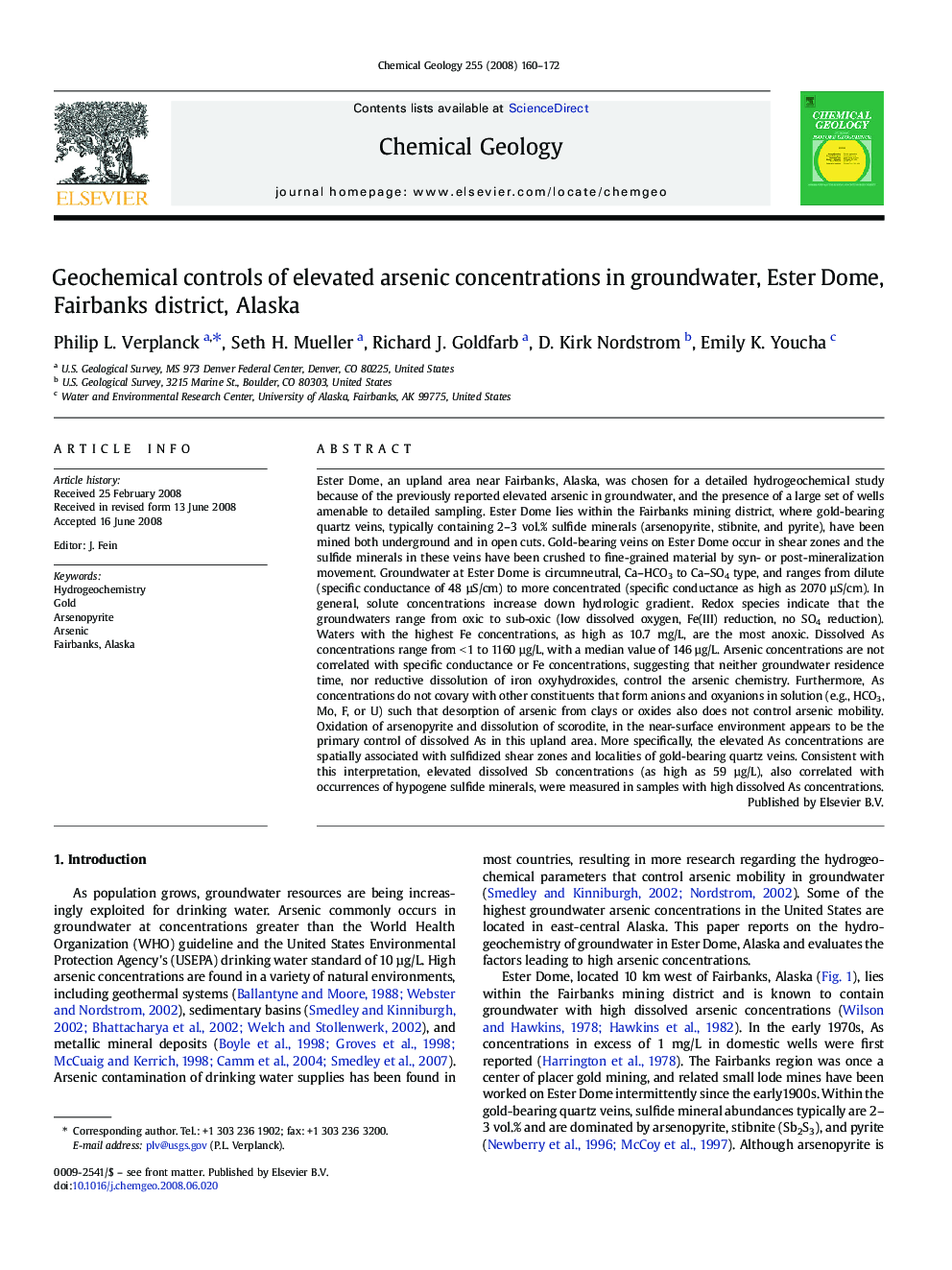| کد مقاله | کد نشریه | سال انتشار | مقاله انگلیسی | نسخه تمام متن |
|---|---|---|---|---|
| 4700676 | 1637722 | 2008 | 13 صفحه PDF | دانلود رایگان |

Ester Dome, an upland area near Fairbanks, Alaska, was chosen for a detailed hydrogeochemical study because of the previously reported elevated arsenic in groundwater, and the presence of a large set of wells amenable to detailed sampling. Ester Dome lies within the Fairbanks mining district, where gold-bearing quartz veins, typically containing 2–3 vol.% sulfide minerals (arsenopyrite, stibnite, and pyrite), have been mined both underground and in open cuts. Gold-bearing veins on Ester Dome occur in shear zones and the sulfide minerals in these veins have been crushed to fine-grained material by syn- or post-mineralization movement. Groundwater at Ester Dome is circumneutral, Ca–HCO3 to Ca–SO4 type, and ranges from dilute (specific conductance of 48 µS/cm) to more concentrated (specific conductance as high as 2070 µS/cm). In general, solute concentrations increase down hydrologic gradient. Redox species indicate that the groundwaters range from oxic to sub-oxic (low dissolved oxygen, Fe(III) reduction, no SO4 reduction). Waters with the highest Fe concentrations, as high as 10.7 mg/L, are the most anoxic. Dissolved As concentrations range from < 1 to 1160 µg/L, with a median value of 146 µg/L. Arsenic concentrations are not correlated with specific conductance or Fe concentrations, suggesting that neither groundwater residence time, nor reductive dissolution of iron oxyhydroxides, control the arsenic chemistry. Furthermore, As concentrations do not covary with other constituents that form anions and oxyanions in solution (e.g., HCO3, Mo, F, or U) such that desorption of arsenic from clays or oxides also does not control arsenic mobility. Oxidation of arsenopyrite and dissolution of scorodite, in the near-surface environment appears to be the primary control of dissolved As in this upland area. More specifically, the elevated As concentrations are spatially associated with sulfidized shear zones and localities of gold-bearing quartz veins. Consistent with this interpretation, elevated dissolved Sb concentrations (as high as 59 µg/L), also correlated with occurrences of hypogene sulfide minerals, were measured in samples with high dissolved As concentrations.
Journal: Chemical Geology - Volume 255, Issues 1–2, 30 September 2008, Pages 160–172